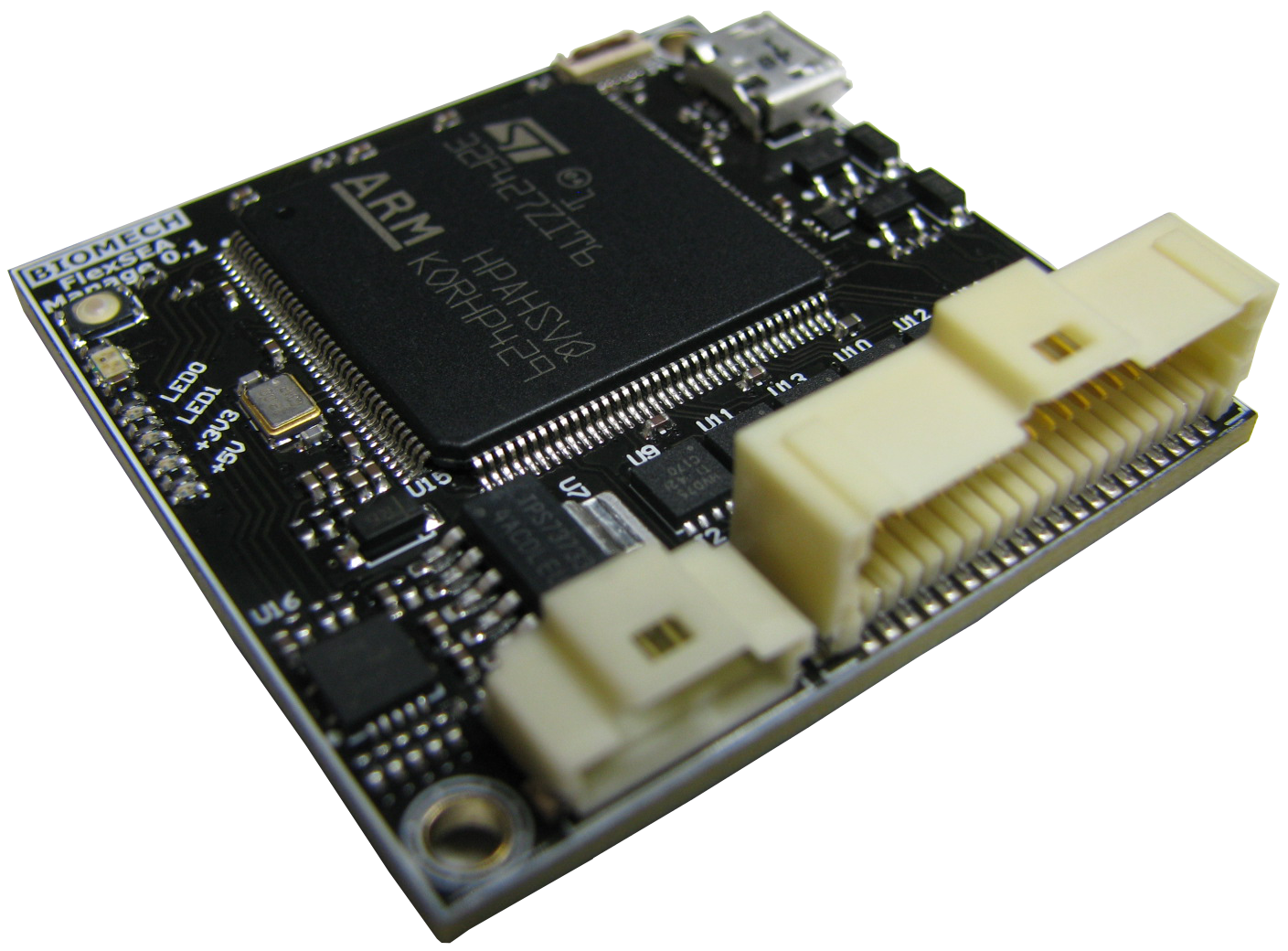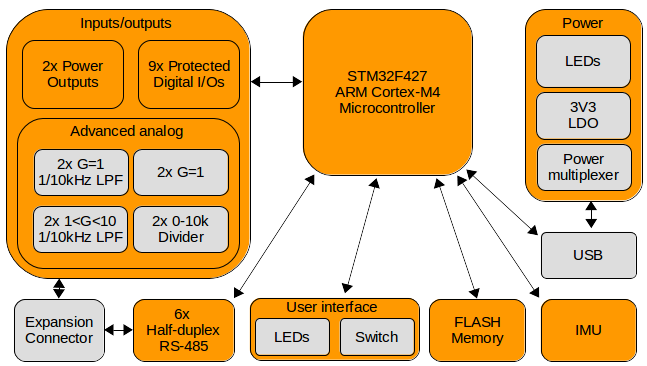FlexSEA-Manage is a polyvalent circuit that can have a wide range of usages depending on the system architecture. In the simplest system designs, it will act as a communication protocol translator, allowing Plan and Execute to communicate. When multiple FlexSEA-Execute are used, it routes packets, and can manage communication timings. It can be used to add extra sensors and output devices to the system. In systems that do not require the computing power of an embedded computer, Manage can host the high-level state machines.

The following figure presents the hardware diagram of FlexSEA-Manage 0.1. In orange are the schematic sheets and in grey are the sub-circuits present on certain sheets.

| Electrical specifications | Supply voltage (V) | 5V in (from Plan or USB), on-board 3V3 regulator |
| Current (mA) | 90mA | |
| Microcontroller | Reference | STM32F427ZIT6 |
| Special features | Floating-point co-processor can be software enabled. | |
| CPU/RAM/IOs/Package | 180MHz ARM Cortex-M4, 2MB FLASH, USB | |
| Software / IDE | Eclipse C/C++, GNU Tools for ARM Embedded Processors (arm-none-eabi-gcc), OpenOCD GDB. | |
| Serial interfaces | Type | 2x [half-duplex, asynchronous full-duplex or synchronous full-duplex RS-485] |
| Bandwidth | 2-10Mbps | |
| Type | Full-duplex SPI | |
| Bandwidth | 20+ Mbps | |
| Onboard USB | Full-Speed (FS) / High-Speed (HS) | |
| Peripherals / features | FLASH memory | 128Mbits |
| IMU | 6-axis (3x accelerometer, 3x gyroscope) | |
| Power output | 2x 24V 1A high-side switches | |
| LEDs | 2x green, 1x RGB | |
| Switches | 1x user input switch | |
| IO connector | Molex PicoClasp 40 positions, SMD 1mm pitch | |
| External peripherals | IOs available | 17, shared with functions below |
| Digital IOs | Up to 9, protected | |
| Analog inputs | 8x 12-bit SAR with special functions (filters, amplifiers, dividers, …) | |
| Serial | I²C, SPI, USART | |
| Dimensions (mm) | X (mm) | 40 |
| Y (mm) | 40 | |
| Z (mm) | 11.5 | |
| PCB technology | Layers | 4 |
| Copper | 1Oz | |
| Trace/space/via | 5/5 mils trace/space, 8/20 mils vias | |
| Technology | Standard | |
| Assembly | Double-sided |
 Jean-François Duval
Jean-François Duval
Discussions
Become a Hackaday.io Member
Create an account to leave a comment. Already have an account? Log In.